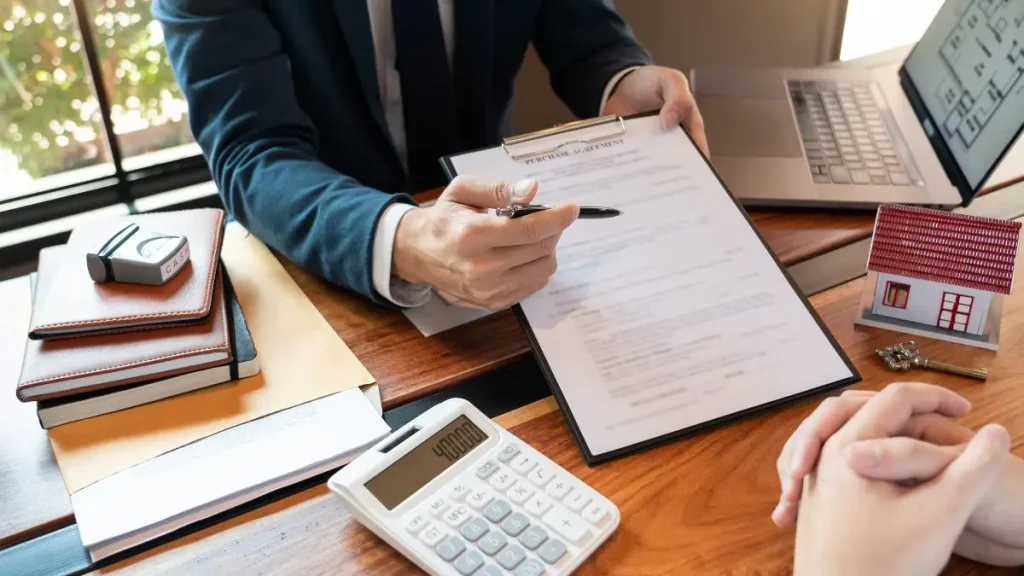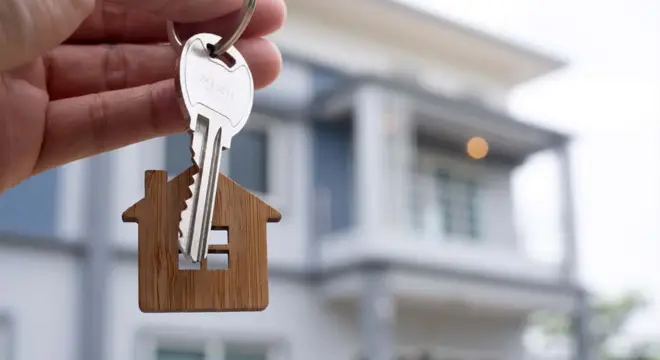Can You Buy a Home With Bad Credit? These Options Might Surprise You
Let me say this upfront: buying a home with bad credit isn’t impossible. It’s just harder. And that’s what makes it frustrating, right? You’re trying to do something smart—own instead of rent—but your past keeps following you around in numbers.
I’ve worked with people who had credit scores in the 500s, student loan defaults, even old collections they forgot about. They didn’t have perfect profiles, but they still managed to buy homes—because they knew what to do and what lenders actually care about.
Here’s the truth: most advice online is either sugar-coated or painfully vague. You get the usual “improve your credit” or “wait it out” lines. But that’s not always realistic. Sometimes you need options now—even if your credit isn’t ideal.
In this guide, I’ll walk you through exactly what you can do if your credit score is holding you back. Not just the textbook tips, but real strategies people are using today to get into homes—with FHA loans, co-signers, and even low down payment options despite poor credit.
Whether you’re dealing with a rough patch or years of damage, I’m not here to judge—I’m here to show you what actually works.
Have you tried applying already and got rejected? Or are you just preparing ahead? Let me know in the comments so I can tailor future tips around where you’re stuck.
What Really Counts as “Bad Credit” When Buying a Home?
Let’s get one thing straight—I’ve seen people stress over a “bad credit” label without actually knowing what it means in the homebuying world. So, let’s clear that up.
If your credit score is below 620, most traditional lenders will label you as “subprime.” For conventional loans, that’s a tough spot to be in. But it’s not the end of the road.
I tell folks:
- 580+ is the magic number for many FHA loans
- 500–579 is still workable—but you’ll need a bigger down payment
- Below 500? That’s when it gets tricky, and you’ll need to focus on rebuilding first
Why does this matter? Because your score doesn’t just decide if you’re approved—it affects your interest rate, loan term, and even your down payment. A lower score often means a higher rate, which can cost you tens of thousands over the life of a loan.
But here’s the real deal: your score is just part of the picture. Lenders also look at your income, debts, savings, and even your payment history. That’s where we find opportunities.
What Loan Options Are Actually Available With Bad Credit?

I’ve had clients ask me, “Can I even get a mortgage if my credit sucks?” And my answer is always: yes, but not just any mortgage. You need to know which ones are built for buyers like you.
- FHA Loans — The Most Flexible Options
As per House Logic, if your score is 580 or higher, you can get an FHA loan with just 3.5% down. That’s a huge win. Even if you’re between 500–579, you can still qualify—but you’ll need to put down at least 10%.
FHA loans are backed by the government, so lenders feel safer taking a risk on you. And here’s what I love: they often allow manual underwriting, which means a human looks at your entire profile—not just a number.
- VA and USDA Loans
If you’re a veteran or looking to buy in a rural area, these loans could be gold. VA loans don’t even have a minimum credit score requirement (though lenders usually want 580–620). USDA loans are similar and may require zero down. - Private Lenders & Alt Programs
These aren’t your neighborhood banks. They’re lenders who specialize in risk—so they’re open to lower scores. Yes, the rates can be higher, but for some buyers, this is the path to ownership. I usually tell people to use these as a bridge—not a forever loan. - Consider a Co-Signer
If you’ve got someone with strong credit who’s willing to sign on with you, that can instantly improve your odds. Just remember, if you miss a payment—it hits their credit too.
What’s your biggest hurdle right now—credit score, saving up, or lender rejection? Drop your situation in the comments—I read every one and tailor future advice based on what real people are facing.
Fixing Your Credit Without Wasting Time or Money
Look, I’ve been there—I know how overwhelming “fix your credit” sounds when you’re not even sure where to begin. But the truth is, you don’t need a perfect score to buy a home—you just need to make a few smart moves, fast.
Here’s where I’ve seen the biggest wins:
1. Pull All 3 Credit Reports
Don’t just check one app. I want you to look at Experian, Equifax, and TransUnion. Dispute anything that looks off—collections that are already paid, duplicate accounts, or errors in balances.
2. Pay Down Credit Cards Strategically
Focus on the ones closest to the limit. Credit utilization (how much of your available credit you’re using) is a huge factor. Try to get it below 30%, and you’ll likely see a bump in just 30–60 days.
3. Add Positive History With Tools Like Experian Boost
You can actually get credit for paying things like your Netflix subscription, utility bills, or rent. It’s not magic—it’s real, and tools like Boost help get those payments onto your file.
4. Avoid New Credit Inquiries
If you’re planning to apply for a mortgage in the next 3–6 months, don’t open new accounts. Lenders don’t like it when it looks like you’re “shopping for debt.”
Equifax confirms that payment history, credit utilization, and account mix are the three biggest drivers of your score. So focus on those—and ignore all the gimmicky advice out there.
If you’re trying to navigate this credit repair journey and want real-time tips from others doing the same, I’ve seen some great insights shared in certain WhatsApp homebuying groups lately.
They’re discussing things like Experian Boost results, which lenders are approving lower scores, and even rent reporting tricks that actually worked. Definitely worth checking out if you’re feeling stuck.
Smart Prep Before You Apply — Even With Bad Credit
Even if your credit score isn’t ideal, how you prepare before applying can significantly improve your chances of getting approved.
Here’s what you should focus on:
- Save for a bigger down payment
Aim for 10%–20% if possible. A larger down payment lowers the lender’s risk and can improve your loan terms. - Lower your debt-to-income (DTI) ratio
Keep your DTI under 43%. That means reducing existing debts—especially credit cards or personal loans—to make room for a mortgage payment. - Gather strong income documentation
Lenders want to see at least 2 years of stable income. Prepare your pay stubs, W-2s, and bank statements in advance. - Use prequalification tools before applying
Zillow’s mortgage prequalification tools can estimate what you qualify for without hurting your credit score. It’s a smart way to gauge your options. - Avoid new credit activity before applying
Opening new credit lines or applying for multiple loans before a mortgage can hurt your application. Stay financially steady during this period.
Prepping your finances is one part—but knowing what smart buyers inspect before purchase is equally critical. Don’t let hidden issues eat into your new home budget.
Overlooked Strategies Most People and Guides Miss

This is where you get an edge—practical strategies other guides usually skip but can make a real difference when buying with bad credit.
- Rent and utility payments may now help your credit
With newer scoring models like Vantage Score 4.0, your on-time rent, utility, and phone payments can improve your credit score. Ask lenders if they support alternative data or offer manual underwriting. - Explore rent-to-own or lease-option agreements
If you don’t qualify for a mortgage now, a rent-to-own path can allow you to secure a home while working on your credit. It gives you time to improve without losing your desired property. - Work with a mortgage broker who understands bad credit cases
Some brokers specialize in helping buyers with low scores. They often know which lenders are open to manual reviews or flexible underwriting. - Submit a letter of explanation (LOE)
If your credit was damaged due to one-time events—like medical bills, divorce, or temporary job loss—a well-written LOE can provide helpful context for underwriters, especially for FHA loans. - Think long-term: refinance later
Start with a bad-credit-friendly loan (like FHA or private), then refinance after 12–24 months of on-time payments and score improvement. This lets you lock in better rates later, even if your first loan isn’t ideal.
Once you do get that approval, make sure you’re fully ready by following these 10 critical things to do after your home goes under contract.
Should You Buy Now or Wait? Here’s How to Decide
One of the most common questions I get is this:
“Should I try to buy now or wait until my credit score improves?”
Honestly? There’s no one-size-fits-all answer—but there is a simple framework I use to help people decide.
Here’s how I’d walk you through it:
Buy Now If…
- Your credit score is at least 580 (FHA-eligible)
- You have a stable job and consistent income
- You’ve saved at least 3.5% to 10% down payment
- You’re okay with possibly paying a higher interest rate for now
- You’re open to refinancing later once your score improves
This path works when you don’t want to wait 1–2 years to become a homeowner. I’ve helped buyers use this exact strategy—get the home now, then refinance when credit is better.
Wait If…
- Your credit score is below 580
- You have recent late payments or collections
- You don’t have enough for a down payment yet
- You’re worried about being “house poor” or paying too much interest
- You need time to clean up your credit and build stability
In that case, focus the next 6–12 months on raising your score. You’d be surprised how much ground you can cover in less than a year if you take the right steps.
If you’re still early in your journey, these 10 simple steps to buying a house in 2025 will help you build the right foundation—especially if you’re buying for the first time.
Your Clear Action Checklist

Let’s not overcomplicate things. If you’re serious about buying a home with bad credit, you need a focused, step-by-step plan—not just tips scattered all over the place.
Here’s the exact checklist I give to my own clients. Follow this, and you’ll know where you stand—and what to do next.
Step 1: Check Where You Stand
You can’t fix what you can’t see. So start here.
- Pull your credit reports from Equifax, Experian, and TransUnion
- Note your credit score from each bureau (they might differ)
- Look for errors, outdated accounts, or anything that shouldn’t be there
- Make a list of:
- Open debts
- Missed payments
- Accounts in collections
Step 2: Fix What You Can Control
You don’t have to fix everything—but start with what moves the needle fast.
- Dispute errors with each bureau directly (especially collections already paid)
- Pay down credit cards—focus on accounts closest to their limits
- Avoid new credit inquiries or opening new accounts
- Use tools like Experian Boost or report your rent via third-party services
Step 3: Get Financially Mortgage-Ready
This is the stuff lenders look for, even more than just your score.
- Save up a down payment—aim for 10% if your score is below 580
- Cut your debt-to-income ratio by paying off small loans or reducing expenses
- Gather documentation:
- 2 years of tax returns or W-2s
- Pay stubs
- Recent bank statements
Step 4: Choose Your Best Loan Strategy
Now that you’ve prepped, pick the smartest path forward.
- FHA loan: Great if your score is 580+
- Manual underwriting: Works if you have thin credit or strong rental history
- VA or USDA loan: If you’re eligible, they can allow lower credit scores
- Rent-to-own or co-signer: Options if traditional lenders say no
Step 5: Decide — Buy Now or Wait
This is your judgment call—but make it strategically, not emotionally.
- Buy now if you qualify and can handle the terms
- Wait 6–12 months if you’re close to qualifying for better rates or lower payments
- Either way, refinancing later is always an option
If you follow this checklist, you’re not just hoping—you’re planning.
You’ll go from “I want to buy a house, but my credit sucks” to “I know exactly what to do next.”
Final Thoughts
Buying a home with bad credit isn’t about luck—it’s about strategy. I’ve seen people go from rejection to keys-in-hand just by following a focused plan.
If you stay consistent, avoid shortcuts, and use the right tools, homeownership is still within reach—no matter what your credit score says today.
If you’re serious about getting homebuying-ready—even with credit challenges—explore more actionable guides on our Home Buying section. It’s built to help you move forward smartly, not blindly.
Disclaimer: This article is for informational purposes only and should not be taken as financial or legal advice. Always consult with a licensed mortgage advisor or financial planner before making home-buying decisions. Loan eligibility and credit requirements may vary by lender and location.


